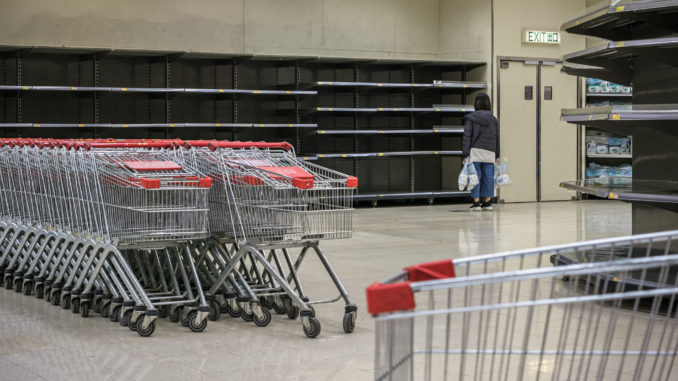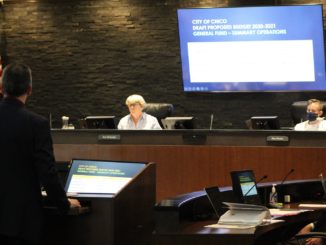
By Jackie Botts for CalMatters
CalMatters is an independent public journalism venture covering California state politics and government. For more info, visit calmatters.org.
In the five years before the pandemic, low-income Californians had begun to see substantial wage gains, chipping away at the income inequality gap between California’s haves and have-nots that has widened over the past 40 years. But the coronavirus pandemic is “likely stripping away many of these gains,” researchers at the Public Policy Institute of California found in a new report.
The current coronavirus-induced recession has hit low-income workers the hardest, while higher income workers, largely able to work from home, have escaped relatively unscathed. And those acute job losses among low-wage workers — particularly African Americans, Latinos, workers without college degrees and women — have stayed worryingly high through the fall, the researchers found.
This could be “exacerbating that kind of pattern of recession and recovery that’s worse for low-income families,” said lead author Sarah Bohn, who is the vice president of research at PPIC. “In fact, these unemployment rate differences across income are a bit worse today than they were during the Great Recession.”
The findings were underscored by troubling new estimates of monthly poverty rates in the Golden State, from a group of researchers led by Zachary Parolin at Columbia University’s Center on Poverty and Social Policy.
“The monthly poverty rate in October was actually higher than rates during April and May, despite the fact that the unemployment rate declined over that time,” said Parolin at a live-streamed data release. That’s because the federal CARES Act stimulus checks and expansion of unemployment benefits have mostly expired. With unemployment ticking up as California’s new regional shut down orders go into effect, the picture is likely worse now.
Parolin’s estimates replicate the Census Bureau’s annual Supplemental Poverty Measure, which accounts for safety net benefits and the cost of living, unlike the Official Poverty Measure. It’s a measure that California consistently tops.
Taken together, the two sets of research painted an alarming picture of deepening poverty and inequality that could take years if not decades for California to dig itself out of.
California lawmakers are already mulling solutions, though ambitious proposals made now often get reigned in by fiscal realities later in the spring.
Last week, Assemblymember Phil Ting, a San Francisco Democrat who chairs the budget committee, announced his priorities for the session. They included transitional kindergarten for all 4-year-olds, more financial aid for college students, more money for low-income families through the state’s Earned Income Tax Credit, and making parents who don’t work eligible for the state’s Young Child Tax Credit of up to $1,000.
“Our major priority is making sure we do everything to get money into the pockets of the most vulnerable Californians,” Ting said. “So many Californians are struggling. They’re on the brink of homelessness.”
Toni Symonds, chief consultant for the Assembly Committee on Jobs, Economic Development, and the Economy, speaking on a panel about the new poverty data said that lawmakers are considering expanding subsidized childcare for essential workers, salary subsidies for part-time workers at businesses reopening after regional shutdowns, and food assistance, such as the $365 the state gave to families with children last spring.
Matt Fleming, spokesperson for the Assembly Republican Caucus, said that Republican lawmakers, too, are focused on getting money into people’s pockets as quickly as possibly. They are considering bills to repeal AB 5, redirect funding for California’s floundering high-speed rail to education and fix the state’s beleaguered Employment Development Department. Above all, he said, they’ll advocate to keep businesses open and schools in-person as much as possible in the coming months.
“Governor Newsom’s COVID shutdowns have disproportionately targeted those industries that provide jobs to low-income families,” said Senate Republican Leader Shannon Grove of Bakersfield in a statement. “Democrat policies have left them with fewer jobs, more unpaid bills, and less opportunity for their children.”
A recent history of economic inequality
The gap between California’s haves and have-nots has yawned open since 1980, with the loss of manufacturing jobs, more automation, rising incomes for highly educated workers, declining collective bargaining power, and rising numbers of less-educated immigrants, the PPIC researchers wrote.
In 1980, wages for the 10 percent of families with the highest incomes was 7.4 times larger than families in the bottom 10 percent. By 2019, that ratio was 9.8.
Recessions have historically made inequality worse.
The highest-income families generally take a hit of up to 7 percent then recover within a few years. Meanwhile, the lowest income families often face “much steeper and deeper declines” of up to 20 percent in wages, PPIC’s Bohn explained. In three of the last four recessions, it has taken them a decade on average to recover their pre-recession wages.
But following the recovery from the Great Recession, things were looking up. A historically long period of economic growth had seen incomes for the poorest Californians rise from $20,000 in 2014 to $27,000 in 2019, a 34 percent increase that outpaced income growth for the highest earners.
Then the pandemic hit, putting entire low-wage sectors out of work, like restaurants, retail, entertainment, tourism, beauty and barber shops. In the spring, as many as 44 percent of workers in families with incomes below $30,000 were either unemployed, working part time though they preferred to work full time, or had stopped looking for jobs, according to the report. By the fall, the number hadn’t dropped much, at about 37 percent.
Are solutions on the horizon?
The billions of dollars that the CARES Act pumped into California lifted an estimated 3.5 million Californians out of poverty in April, Columbia’s Parolin said. But that number dropped to 600,000 in October as unemployment benefits dried up.
Another 750,000 Californians stand to lose unemployment benefits on Dec. 26, so if Congress doesn’t agree on a new stimulus package soon, California will see rising poverty rates in January, Parolin said.
Whether California’s short-term poverty rates stay high will largely depend on how Congress and the incoming Biden administration negotiate future stimulus packages.
Parolin said the federal government could quickly reduce monthly poverty by increasing the maximum benefit for food stamps by at least 15 percent, which it did during the Great Recession.
“What is clear to me is we need another round of stimulus last month and the month before, if not right now,” said Amy Everitt, president of Golden State Opportunity, a non-profit that has advocated for expanding the state’s earned income tax credit.
Bohn emphasized that the state has policy options, too, and Californians are hungry to fight inequality. In a September survey, PPIC found that 59 percent thought the state should do more to reduce the gap between rich and poor. The idea was especially popular among African Americans, Asian Americans and Latino residents.
The PPIC report included a list of short-term state policy suggestions: targeting relief to hard-hit businesses, expanding safety net benefits including to undocumented workers, investing in job training for workers in sectors like leisure and hospitality that may not recover, expand subsidies for child care.
Bohn warned that “over the long term, getting jobs back is not sufficient for improving the score of inequality.” The report recommended that the state improve long-term economic mobility by investing in access to high-quality child care and higher education and taking “corrective policy actions” to reverse long standing underinvestment in low-income and communities of color.
Riverside County Supervisor V. Manuel Perez said more funding for childcare was “essential” to getting families out of poverty, as is improving broadband access, which he called an “issue of civil rights” for children of color.
His largely Latino district, which encompasses the Coachella and Palo Verde Valleys, is a microcosm of California’s persistent inequality, he said, even though “there’s a picture out there that the Coachella Valley is a playground.”
“Quite frankly, it is for those that have, and it’s not for those that don’t,” Perez said.
This article is part of the California Divide, a collaboration among newsrooms examining income inequality and economic survival in California.




Be the first to comment